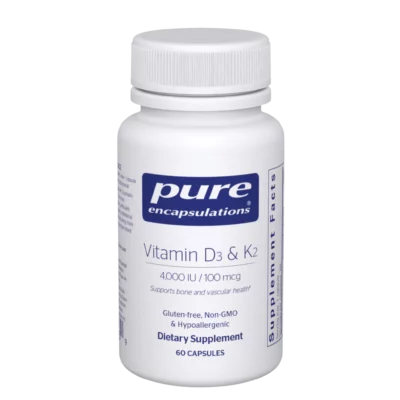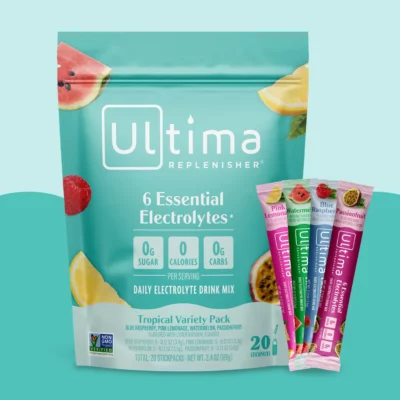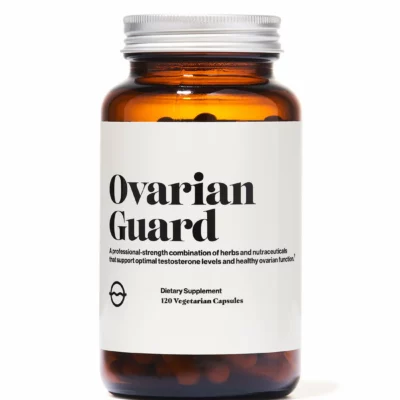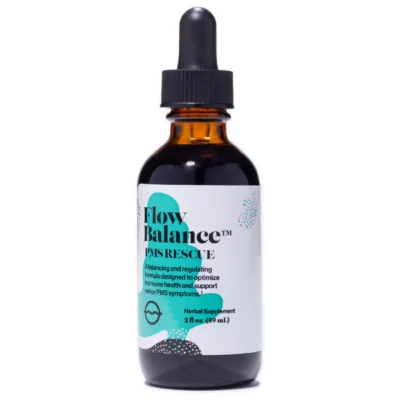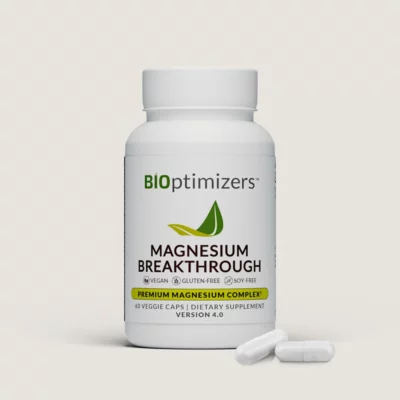We may receive a portion of sales if you purchase a product through a link in this article.
Picture this: The week before your period begins, PMS is as mild as can be. The day your period begins, you aren’t plagued with cramps. In the days leading up to ovulation, you feel light, social, and vibrant. And as your monthly cycle comes to a close, you acknowledge—and embrace!—an inward need for creativity and grounding. Sounds blissful (and seemingly unrealistic), right? Enter: cycle syncing, where tapping into the natural rhythm of your hormones makes a better flow possible. Period.
Without further ado, it’s time to align your habits (and daily eats) with the distinct phases of your menstrual cycle (if you’re looking for more, check out this guide to balancing your hormones naturally). Ahead, learn how to strategically incorporate supplements for cycle syncing. Your transformative journey is just beginning. Let’s dive in.
Featured image from our interview with Kate Waitzkin by Michelle Nash.


What is cycle syncing?
At the root of it, cycle syncing is about fostering a deeper connection with your body. Whether you’re familiar with this wellness approach—or hardly keep track of your period—the premise of cycle syncing is to live in tandem with your hormones. Said differently, cycle syncing is about harnessing the power of your body’s natural rhythms. In turn, you can optimize your physical, emotional, and mental well-being.
Once you understand your cycle, you can align everything from your supplements to your social calendar to fit the unique needs of each phase. Think of cycle syncing as a gentle nudge to embrace self-care practices, focus on hormone-friendly foods, and engage in specific workouts for overall health.
Sync your self-care practices to each phase with this monthly hormone planner.
Who benefits from cycle syncing?
All women of menstruating age—even those with irregular periods or those on birth control—benefit from cycle syncing. Let’s start with irregular cycles. If your cycle is less than 20 days, longer than 35 days, or completely absent, chat with your healthcare provider about potential underlying conditions. That said, even with an irregular cycle, embracing cycle-syncing principles is helpful. Along with keeping blood sugar balanced, eating enough, and getting quality rest, cycle syncing is akin to a hug for your hormones.
What about birth control? Although this type of contraception suppresses ovulation, the body still undergoes hormonal fluctuations—albeit, in a controlled manner. Regardless, you can easily complement birth control’s hormonal patterns via cycle syncing. Ultimately, cycle syncing offers a holistic approach to empower all women to embrace their unique physiology.
Syncing With Your Infradian Rhythm
You know it as your menstrual cycle, others call it the infradian rhythm. Infradian, what? In essence, it’s the natural, cyclical pattern of your body’s hormonal fluctuations. Unlike the circadian rhythm—which operates on a 24-hour cycle and regulates processes like sleep-wake patterns—the infradian rhythm follows a longer time frame.
In many ways, tracking your infradian rhythm helps you optimize your lifestyle choices. Hello, cycling syncing! Wondering how to track your infradian rhythm? Simply begin monitoring your menstrual cycle.
Phases of the Menstrual Cycle
Before we chat supplements for cycle syncing, here’s a refresher. A woman’s body undergoes a series of changes each month—between puberty and menopause. This series of hormone-driven events is called the menstrual cycle. During each menstrual cycle, an egg develops and is released from the ovaries. The lining of the uterus builds up. If a pregnancy doesn’t happen, the uterine lining sheds. Thus, the cycle starts again. Like the seasons, a woman’s menstrual cycle has four distinct phases:
• Menstrual: the start of your period.
• Follicular: 7-10 days leading up to ovulation.
• Ovulatory: 3-5 days of ovulation.
• Luteal: 10-14 days before your period begins again.
Supplements for Hormone Balance
Before we dig into supplements for cycle syncing, what are general supplements for hormone balance? Keep in mind that supplements are meant to be just that—supplementary. Additionally, supplements should meet the unique requirements of your body. Work with a healthcare provider to determine which (if any!) you need to take. Generally speaking, these are supplements that most women can take to support their hormones:
Vitamin D + K2
Vitamin D is helpful for hormone balance because it plays a critical role in regulating the body’s endocrine system. In fact, it functions as a hormone itself! Adequate vitamin D levels have been linked to improved insulin sensitivity, which can positively impact hormone balance—especially in conditions like polycystic ovary syndrome (PCOS). Additionally, vitamin D supports healthy estrogen and progesterone levels.
Omega-3 Fatty Acids
Thanks to their anti-inflammatory properties, omega-3 fatty acids are helpful for hormone balance. They play a crucial role in supporting the production and regulation of hormones. Omega-3s can help reduce inflammation (a common factor contributing to hormonal imbalances). Additionally, these healthy fats support overall hormonal health and may contribute to a more balanced endocrine system.
Magnesium
Did you know that magnesium is a cofactor in over 300 enzyme systems in the body? It’s crucial. Magnesium helps regulate hormone production, aids in the conversion of inactive hormones into their active forms, and contributes to overall hormone equilibrium.
You can find our full supplement guide here.
Menstrual Phase
With an understanding of cycle syncing under your belt, we’re segueing into each cycle phase. Beginning with the menstrual phase: the start of your period. The lining of the uterus is shedding. Hormones are at an all-time low. Your body is losing blood and iron. Prostaglandins (which cause cramping) are peaking. You probably feel more inward, slow, and restful here. In terms of cycle syncing during your period, the aim is to truly nurture your body.
Menstrual Phase Foods
- Focus on nourishing, warming foods that build iron, assist in iron absorption, and are anti-inflammatory to fight cramps. Beef, fish, and poultry (liver is also a fantastic source!) are great.
- In terms of spices and herbs, think: turmeric, ginger, cinnamon, cayenne, cardamom, cumin, garlic, parsley, and curry.
- Load up on a variety of plant foods—spinach, kale, collard greens, broccoli, mushrooms, beets, bell peppers, lentils, kidney beans, chickpeas, citrus fruits, strawberries, cherries, mango, and papaya.
Menstrual Phase Supplements
- Iron: To replenish iron levels due to blood loss during menstruation.
- Magnesium: Helps with alleviating cramps and supporting relaxation.
Follicular Phase
Hormone levels are starting to rise. Energy begins to pick up, and you’ll feel more confident and social. Estrogen is an anabolic hormone (meaning it helps things grow), so we are at our strongest during this phase. Some women experience a little fluid retention around ovulation, as well as mild constipation, crampiness, or nausea.
Follicular Phase Foods
- Vitamin B-rich foods (100% whole grains, meat, eggs, dairy, nuts and seeds) support the follicular phase.
- Protein and cruciferous veggies (broccoli, cauliflower, cabbage, etc.) are important during this time as they support estrogen detoxification.
- Foods high in vitamin E—such as sweet potatoes, olives, leafy greens, and nuts and seeds nourish growing follicles.
- We are also more insulin sensitive, so our bodies can tolerate more carbohydrates during this phase.
Follicular Phase Supplements
- B Vitamins (B6, B12): To support energy levels and hormone balance.
- Zinc: For hormone regulation and menstrual cycle support.
Ovulatory Phase
Around days 11-14 of your cycle (during the follicular phase), you’ll likely ovulate. Estrogen peaks, and most women feel vibrant and sensual. Libido peaks around ovulation, too! Cervical fluid changes. It’s possible to experience some fluid retention around ovulation, as well as mild constipation, crampiness, or nausea.
Ovulatory Phase Foods
- Along with other foods that support the follicular phase, opt for fiber-rich foods and plenty of water to reduce fluid retention. Parsley, celery, and green tea can help.
- Foods rich in B vitamins help a woman’s body release an egg—leafy greens, wild-caught salmon, eggs, legumes, and grass-fed beef.
Ovulatory Phase Supplements
- Omega-3 Fatty Acids: To reduce inflammation and support overall hormone health.
- Vitamin E: For fertility support and hormone balance.
Luteal Phase
Progesterone is on the rise. This is our fat-burning, temperature-regulating, pro-gestational hormone. Toward the end of this phase, PMS may begin. You may start to feel a little more introverted, and this is because estrogen is declining. And with it, serotonin levels drop. Progesterone increases during the luteal phase, which impacts our metabolism. Typically, hunger levels go up and we tend to crave salty, carb-rich foods.
Luteal Phase Foods
- Up your hormone-loving fats! Sunflower seeds and tahini are helpful as they help with estrogen detox.
- Magnesium-rich foods, such as spinach, dark chocolate, legumes, avocado, banana, raspberries, and wild-caught salmon can help alleviate PMS.
- Hunger levels are typically quite high during this phase. It’s normal to crave more food! Reach for an extra snack to nourish your hard-working body.
Luteal Phase Supplements
- Calcium: Helps ease premenstrual symptoms and promote relaxation.
- Vitex (Chasteberry): To support progesterone levels and balance hormones.
Herbs For Cycle Syncing
Last but not least, herbs for cycle syncing. These herbs have been used for centuries in traditional medicine practices and are known for their specific benefits during different phases of the cycle. For example, during the menstrual phase, herbs like cramp bark and ginger may help alleviate menstrual cramps and discomfort. Likewise, in the follicular phase, adaptogenic herbs like maca and ashwagandha can promote energy and hormone balance. Following this, in the ovulatory phase, chaste tree berry (vitex) is believed to support progesterone production and fertility. Finally, during the luteal phase, evening primrose oil and dandelion root can help ease PMS and support liver detoxification.
Supplements for Cycle Syncing
As with any herbal supplementation, it’s essential to consult with a healthcare professional before use, especially if you are pregnant, breastfeeding, or have any existing health conditions or medications.
This post was last updated on June 27, 2025 to include new insights.


